Politics
Weaponized infrastructure: The overlooked digital threat to US forces
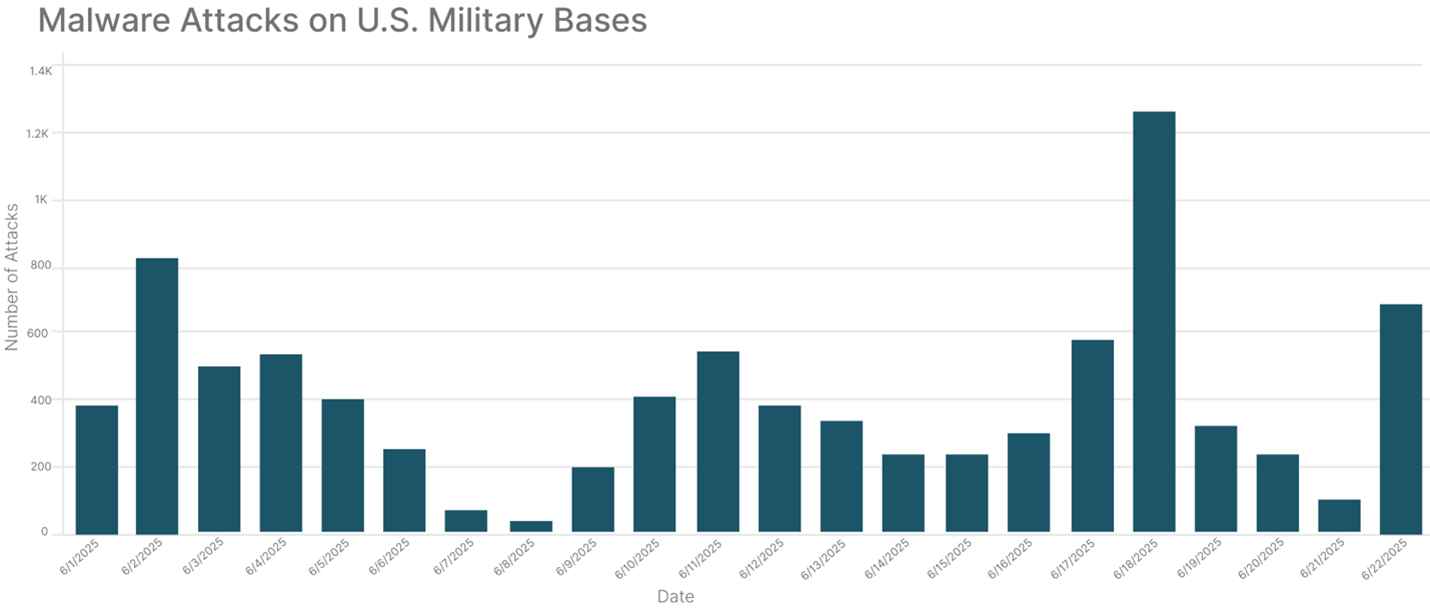
We no longer live in a world where the most dangerous breach begins with a bullet or a bomb. Today, it begins with a line of code executed silently, invisibly, in a system most Americans never think to question.
Cyberattacks against U.S. military infrastructure are escalating not just in volume, but in sophistication and strategic intent. Our analysis of attack patterns from June 2025 paints a troubling picture: Adversaries are using the digital ecosystem not merely to disrupt, but to surveil. And they’re doing so by exploiting the very platforms our armed forces use every day, from public Wi-Fi to embedded scripts on popular websites.
A spike that demands attention
Pat Ciavolella, digital security and operations director at The Media Trust, identified that on June 18, the day President Trump announced the possibility of U.S. involvement in Iran, attacks on U.S. military bases surged by 616% over the previous day. He further explained that backdoor attempts comprised the majority at 57% and another 41% came via phishing vectors. These aren’t isolated threats from rogue hackers. They are coordinated, layered incursions designed to extract operational intelligence without detection.
Source: The Media Trust
What’s more revealing is the target breakdown. The Air Force and Navy bore the brunt of these intrusions. Not the Army. Not interagency hubs. This isn’t coincidental. It’s strategic.
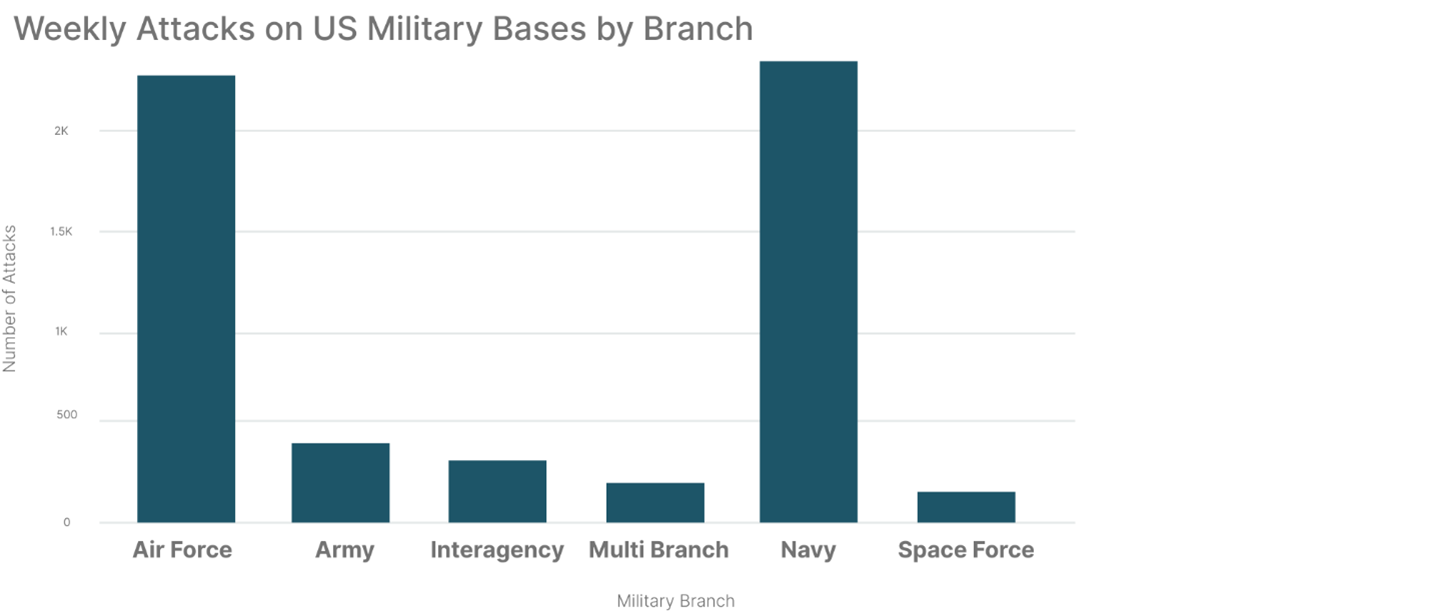
Source: The Media Trust
Air and naval forces are the branches most associated with rapid mobility and equipment deployment — two of the clearest signals that military action may be imminent. Where aircraft are sent, where ships are moved, where logistics ramp up, those data points tell a story. And our adversaries are listening.
The digital theater of war is already active
Simultaneously, we observed a near doubling of attack volume on June 21 and 22 across Israel, Lebanon, Jordan and Egypt. While attribution remains ongoing, the correlation suggests broader geopolitical monitoring. Taken together with the U.S. base activity, the data implies that nation-state actors are mapping not only movement, but coordination — tracking how regional and allied forces prepare, position and respond.
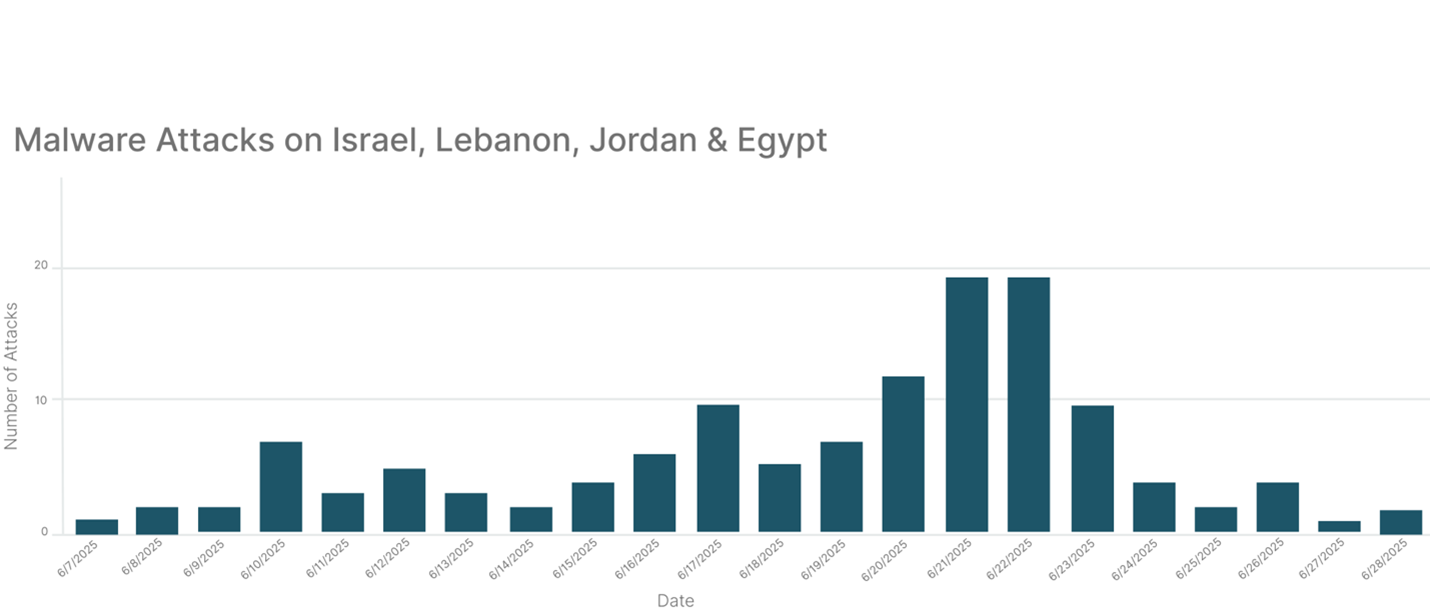
Source: The Media Trust
Surveillance by design
Unlike ransomware or financial theft, these attacks are not about causing chaos. They’re about creating clarity. Accessing login portals, harvesting metadata, cataloging device fingerprints, and leveraging hidden trackers on legitimate websites: All of these techniques enable adversaries to infer intent and timeline, even in the absence of classified material.
The tools are mundane. But that’s the genius. Malicious actors exploit what we’ve normalized: advertising networks, embedded JavaScript, third-party plugins. These are the scaffolding of the commercial web, and they provide an ideal attack surface.
Traditional cybersecurity isn’t built to detect this kind of exploitation. Antivirus software doesn’t flag a compromised weather widget. Endpoint protections don’t see the keystroke logger nested inside a video player. Military cybersecurity defends networks and machines. But adversaries have pivoted to a different target: the people using them.
The blurred line between civilian and combatant
This digital exposure is not a personnel failure. It is a design failure born from the fact that modern devices, apps and platforms are built for engagement, not defense. The same ecosystem that tracks consumers for ad targeting now exposes our warfighters to surveillance with national security consequences.
The devices themselves may be secured. But the platforms? The content? The invisible third-party code that rides along with every app and website? That’s the real vulnerability.
And it’s one that government agencies, policymakers and platform providers have yet to meaningfully confront.
The path forward is a policy challenge, not just a technical one
For too long, digital surveillance has been treated as a consumer privacy issue. But when the same infrastructure used to sell sneakers and insurance can be turned into an intelligence-gathering weapon, we have crossed into a new domain. It demands national security urgency.
We need to evolve our defensive posture accordingly.
- Declare sensitive digital environments as protected data territories, such as military bases, federal buildings and contractor zones.
- Establish operational security (OPSEC) standards for digital behavior across all devices used by service members and government personnel, both official and personal.
- Create interagency frameworks that unify cyber defense efforts across the departments of Defense and Homeland Security, the Cybersecurity and Infrastructure Security Agency, and the intelligence community — not just around known malware, but around behavioral and content-based targeting.
- Redefine “threat detection” to include the digital signals embedded in content delivery, not just executable files.
These are not technology recommendations. They are strategic necessities.
A final warning
The breach no longer comes through the front gate. It comes through a browser tab. Through a pop-up ad. Through an update prompt on a travel app. Through digital exhaust we’ve come to ignore.
The tools used to track consumers are now used to track troops and equipment. And until we confront this truth, our adversaries will keep gathering intelligence right under our noses — script by script, pixel by pixel.
The question is no longer whether we’re being watched. The question is: How much longer will we let it happen?
Chris Olson is the founder of Proxyware and The Media Trust.
The post Weaponized infrastructure: The overlooked digital threat to US forces first appeared on Federal News Network.
Politics
CIPS and BRICS: How China Failed to Undermine the US Financial System

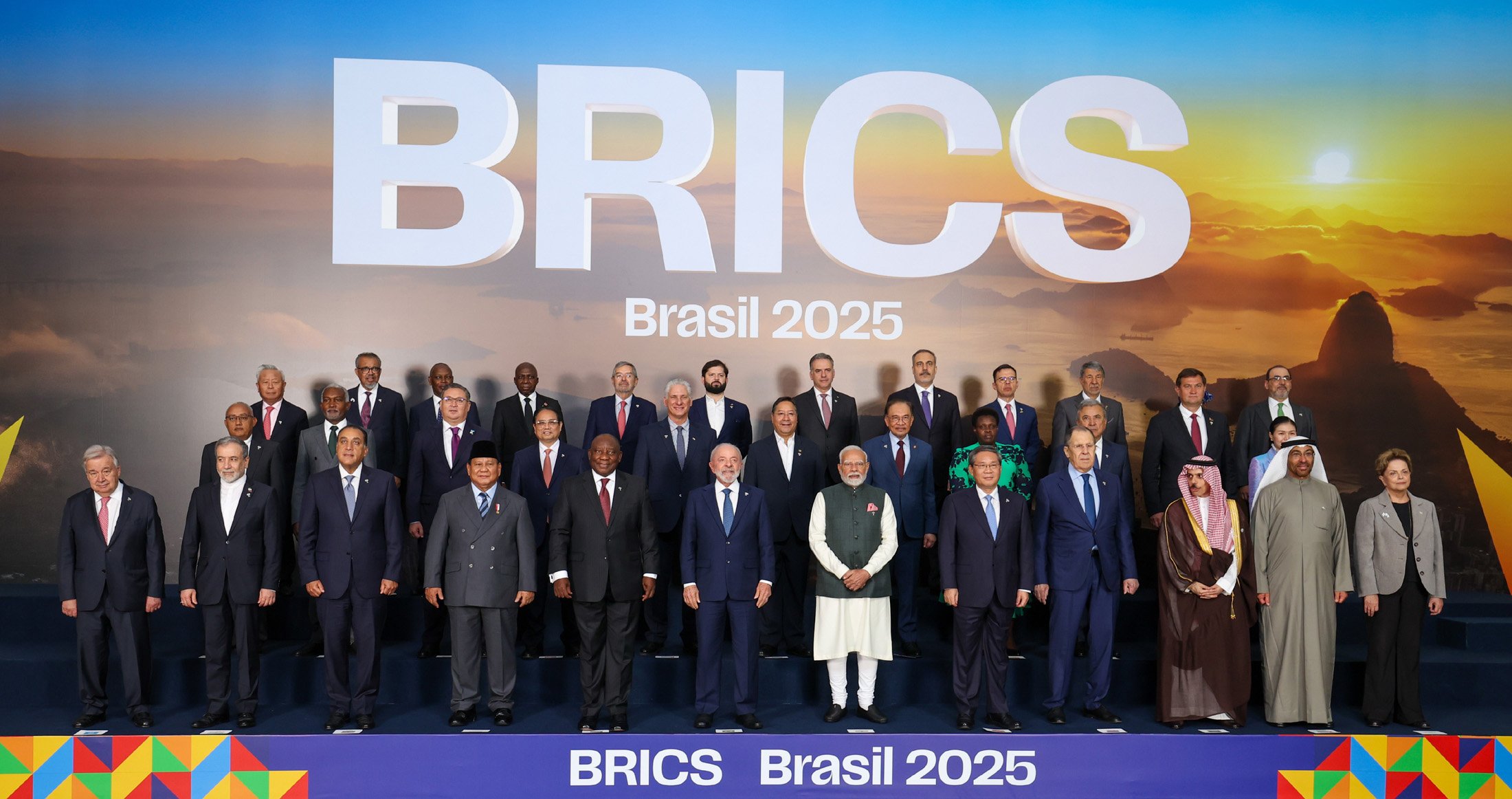 Prime Minister’s Office, India, GODL-India, via Wikimedia Commons
Prime Minister’s Office, India, GODL-India, via Wikimedia Commons
China has promoted two main mechanisms to challenge the dominance of the US dollar and the US-led financial system: BRICS and the Cross-Border Interbank Payment System (CIPS). Both have failed to achieve their goals.
BRICS remains only a political grouping, not a functioning trade bloc. CIPS, launched in 2015 to clear and settle cross-border renminbi (RMB) payments, was designed to reduce reliance on the dollar. Yet it is used mostly by China and a handful of sanctioned states, with limited global appeal.
By January 2022, CIPS claimed about 1,280 member institutions in 103 countries. However, that figure is misleading. The list includes Bank of China branches and subsidiaries abroad, the international offices of Chinese state-owned banks, a limited number of correspondent banks handling China trade, and even banking arrangements for Chinese diplomatic missions. In other words, this is not evidence of widespread international adoption but rather of China’s own institutional footprint.
Beijing has pushed trade partners to settle transactions in yuan instead of dollars, but most countries refuse. Even when yuan is used, it accounts for only a small share of any given transaction, since the US dollar remains the world’s reserve currency and few nations are willing to hold yuan.
The scale disparity underscores this reality. CHIPS, the US Clearing House Interbank Payments System, connects 11,000 institutions and processes $1.8 trillion daily. CIPS, by contrast, has barely more than 1,300 members and processes only around $91 billion per day. The gap between China’s system and the globally entrenched dollar system is enormous.
CIPS also remains heavily dependent on SWIFT, the global secure-messaging system that allows banks to communicate payment instructions with one another. Roughly 80 percent of CIPS transactions still use SWIFT messaging, making it impossible to function as a true alternative. Moreover, the renminbi’s global role remains negligible, accounting for just 2 to 3 percent of international payments and less than 2 percent of letters of credit.
CIPS exists primarily to expand the reach of a single nation’s currency. It lacks the neutrality of SWIFT, remains under Chinese regulatory oversight, and faces resistance from non-Chinese institutions that would need to install new messaging systems. In practice, it cannot replace SWIFT and functions only for yuan-based transactions.
The disparity in volume is staggering. SWIFT handles about 50 million messages daily and settles roughly $5 trillion per day, around $1.25 quadrillion annually. CHIPS processes $1.8 trillion daily, exceeding $400 trillion annually. By contrast, CIPS manages only about 30,500 transactions per day, with a daily value of $91 billion, totaling $24.47 trillion in 2024.
Despite years of promotion, CIPS has not meaningfully challenged the dollar system. Its “growth” reflects Russia’s isolation and China’s domestic push, not genuine global confidence in the yuan. Much of its activity has been driven by China’s own cross-border trade and Russia’s shift to CIPS after being cut off from SWIFT. In 2023, twenty-three Russian banks joined, and transaction volumes rose by 50 percent in 2022 and 25 percent in 2023—growth born of necessity, not international adoption. For now, both CIPS and BRICS remain symbolic rather than systemic threats to US financial dominance.
The other mechanism China has championed is BRICS. Originally comprising Brazil, Russia, India, China, and South Africa, the bloc expanded to ten members in 2025. At the 2024 BRICS Summit in Kazan, Russia, members again floated the idea of creating a new reserve currency, possibly backed by gold or a basket of national currencies, as an alternative to the US dollar. The goal was to assert economic independence and compete with the international financial system dominated by the dollar, which still accounts for about 90 percent of all currency trading.
Yet the idea has never moved beyond discussion. At the July 2024 BRICS summit in Rio de Janeiro, a gold-backed common currency was quietly dropped from the agenda. Barry Eichengreen, historian and economist at the University of California, Berkeley, dismissed the project outright, calling it a charade. India’s Foreign Minister S. Jaishankar was equally blunt, stating: “India has never been for de-dollarization. Right now there is no proposal to have a BRICS currency.”
The obstacles are obvious. BRICS is not a homogeneous group with shared aims, and the members are reluctant to sacrifice monetary sovereignty. No central bank exists to manage a common currency, and creating an issuing authority would be politically impossible. Even when Russia demanded in 2023 that India pay for oil in yuan, India refused, insisting on either rupees or US dollars.
Beyond the currency question, BRICS lacks the institutional framework of a true economic bloc. There is no free trade agreement, despite China proposing one in 2022. Trade among BRICS members accounts for only 6 percent of their combined total trade. Nor is there a mutual defense pact or intelligence alliance that would cement their cooperation.
The group’s only standing institution, the New Development Bank, is 20% smaller than the World Bank and still funds most of its projects in dollars. While China has signed swap agreements with 41 central banks, these arrangements are cumbersome, limited, and have not created meaningful liquidity alternatives.
Russia’s increased use of the yuan since 2023 reflects sanctions pressure rather than genuine de-dollarization. Elsewhere, adoption of the yuan remains negligible. BRICS membership alone has not translated into greater GDP growth for the countries involved, nor has it advanced their financial independence.
The verdict is clear.
A June 2024 study by the Atlantic Council’s GeoEconomics Center found that the US dollar remains firmly entrenched as the world’s primary reserve currency. Both BRICS and CIPS reflect China’s ambition to erode US financial dominance, but both face overwhelming structural, political, and economic obstacles. Far from dethroning the dollar, these initiatives have had no meaningful impact on the dollar-dominated system that continues to underpin the global economy.
The post CIPS and BRICS: How China Failed to Undermine the US Financial System appeared first on The Gateway Pundit.
Politics
Justice Department Investigating Falsified DC Crime Data – Deputy AG Todd Blanche: “We’re Investigating It, and Hopefully We’ll Get to The Bottom of It” (VIDEO)
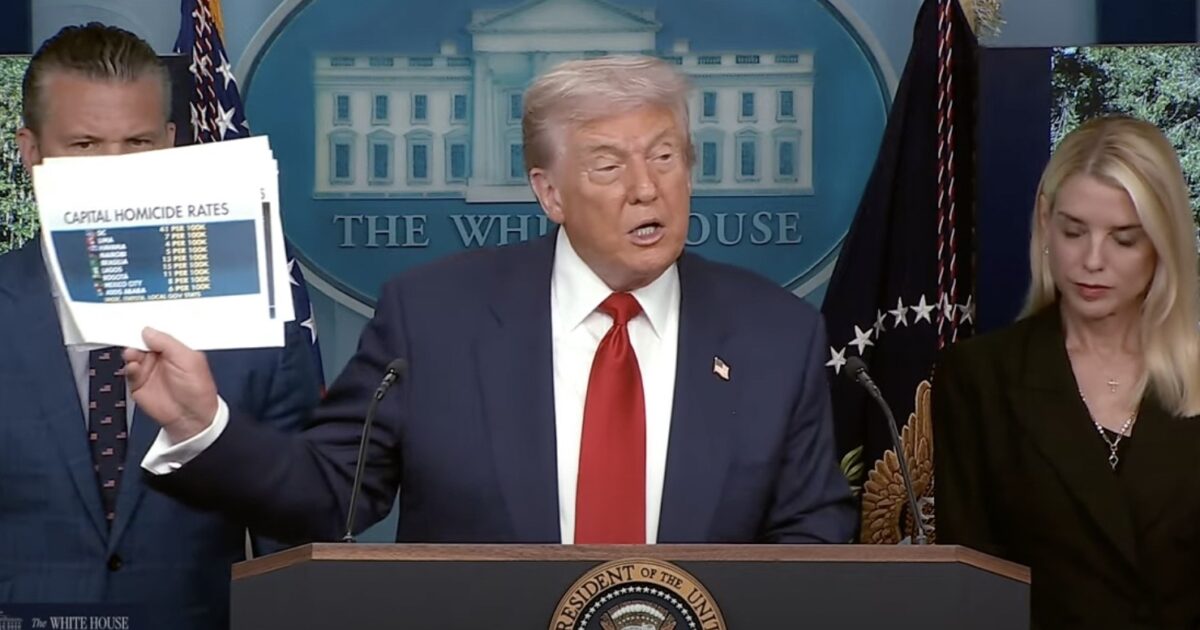
President Trump announces plan to stop violent crime in Washington, DC – August 11, 2025
The Department of Justice is investigating fake crime reporting data from the Metropolitan Police Department as Trump takes federal control of Washington, DC, and deploys federal troops and agents to remove criminals from the streets.
As The Gateway Pundit reported, President Trump signed two executive actions to declare a “public safety emergency” in the nation’s capital, federalize the DC police force, and authorize the use of National Guard troops to tackle the rampant crime, homelessness, and illegal immigration crises.
But leftists and Democratic city leaders have repeatedly pointed to fraudulent data to falsely claim that DC is safe and livable and that President Trump’s actions are unjustified.
The Gateway Pundit reported that the DC Police Commander, Michael Pulliam, was placed on leave in May over allegations that he fudged DC crime statistics to make the city appear safer.
DC Police Commander Accused Of Altering Crime Statistics
The data claims that total violent crime for 2024 is down by 35% compared to 2023 and is at a 30-year low.
"In addition to the overall violent crime reduction, homicides are down 32%; robberies are down 39%; armed carjackings are down 53%; assaults with a dangerous weapon are down 27% when compared with 2023 levels, with the District reporting the fewest assaults with dangerous weapons and burglaries in over 30 years," a January press release from the United States Attorney for the District of Columbia’s office claims.
MPD Chief Pamela Smith issued a statement on the allegations: “Any irregularity in crime data brought to my attention will be addressed immediately,” Smith said. “I do not condone any official reclassifying criminal offenses outside the guidelines set in MPD policy.” Pulliam denies allegations that he altered crime data.
Now, the Department of Justice is probing the data.
Deputy Attorney General Todd Blanche recently joined Fox's Laura Ingraham to discuss the investigation and provide an update on Trump's federal takeover of the capital.
"I can't tell you for sure whether it goes further, but we're, as you just suggested, we're, of course, looking into this," Blanche confirmed when asked if the scheme involves other leaders of the Metropolitan Police Department.
"The reality is that we know that DC has been an incredibly unsafe place to live for a very long time, and so in some ways, it's not surprising that we hear about reports of this, of this type of conduct that suggests that DC is safer than everybody that lives here knows to be true. So, we're investigating it, and hopefully we'll get to the bottom of it at some point soon."
Blanche further spoke about some of the successes they've had, including over 80 arrests in one night and removing weapons, drug offenders, MS-13 gang members, and hardened criminals from the streets.
"The same liberal media that's out there criticizing us and saying that we're doing something wrong and we shouldn't have the National Guard. They're the same liberal media that turn off the mics and jump for joy because they can now go to a restaurant without fear of getting mugged," he said, also slamming the liberals and leftwing activists that advocate for liberal policies like no-cash bail.
"We're fighting judges at the federal level, we're fighting judges who are letting people out in prison, and we're trying to frankly embarrass local leadership that that feels confident in these no cash bail laws that allow somebody to commit a violent crime, and before the sun is set, they're back on the streets again. That is not America, that is not justice, that is not keeping America safe again, and so, in DC, what we're doing is we're showing an example to, hopefully, the rest of this country, that when you focus federal resources on keeping communities safe, it works."
WATCH:
Per the Hill:
The investigation, led by the Office of the U.S. Attorney for D.C., comes from the same office that earlier this year publicized that violent crime in Washington had reached a 30-year low.
The D.C. police union, which supported Trump’s takeover of the force, has said it doubts crime is as low as the city reported.
Statistics released by the city show a 27 percent drop in violent crime and a 4 percent drop in property crime from 2024 to this year. The declines are even more significant for the full year comparisons of 2023 and 2024, with violent crime dropping 35 percent and property crime dropping 11 percent.
MPD did not immediately respond to request for comment nor did the U.S. Attorney’s Office. D.C. Mayor Muriel Bowser’s (D) office did not comment.
The post Justice Department Investigating Falsified DC Crime Data – Deputy AG Todd Blanche: “We’re Investigating It, and Hopefully We’ll Get to The Bottom of It” (VIDEO) appeared first on The Gateway Pundit.
Politics
BetMGM Bonus Code FED150: Claim $150 Betting Bonus for MLB, U.S. Open, WNBA
Baseball fans can win big on MLB games this week by activating BetMGM bonus code FED150. This is an opportunity for new players to claim a $150 bonus or a $1,500 first bet. Activate this offer by clicking here.
Create a new account in select states and start with a $5 bet (MI, NJ, PA and WV). Anyone who picks a winner in these states will receive $150 in bonuses. Players in other states will be eligible for a $1,500 first bet. If that bet loses, players will receive up to $1,500 in bonuses.
BetMGM Sportsbook is raising the bar for fans this week. There are tons of MLB games to choose from on Wednesday night. Not to mention, the college football season starts on Saturday with Kansas State and Iowa State in the Aer Lingus College Football Classic. Here is a deeper dive into the details of this offer.
Click here to sign up with BetMGM bonus code FED150 and secure a $150 bonus (MI, NJ, PA and WV) or a $1,500 first bet.
BetMGM Bonus Code FED150 Offers 2 Promos
It’s important to note that this BetMGM promo is a state-specific offer for players. Most new users will qualify for the $1,500 first bet. Place a cash wager on any game this week. Anyone who loses on that initial wager will receive five bonus bets that add up to the initial stake.
As for players in Michigan, New Jersey, Pennsylvania and West Virginia, check out the 15-1 odds boost. New users can place a $10 bet on MLB, college football, NFL preseason or any other game. If that bet wins, players will receive $150 in bonuses.
This is a great time to sign up and start testing out the BetMGM Sportsbook app. With college football and the NFL starting soon, players can dive directly into the action.
Getting Started With BetMGM Bonus Code FED150
Creating a new account on BetMGM Sportsbook should not take long. New users can get in on the action in a few simple steps. Let’s take a closer look at the registration process:
- Click here to automatically redirect to a sign-up landing page. Apply bonus code FED150 to qualify for either offer.
- Fill out the required information sections to set up a secure user profile.
- Deposit at least $10 in cash using any of the preferred payment methods.
- Bet $10 to collect $150 in bonuses with a win (MI, NJ, PA and WV only).
- Place a $1,500 first bet on any game. Any losses will be offset with bonus bets.
Other Ways to Bet This Week
BetMGM Sportsbook will provide all new players with a sign-up bonus, but don’t forget about the other ways to win in the app. Players can grab an odds boost token for a parlay in any sport this week. Additionally, there is a parlay boost token for MLB fans as well.
Keep an eye out for different offers available in the app. With the NFL and college football seasons about to begin, there should be tons of options for players.
21+ and present in participating states. Gambling problem? Call 1-800-Gambler.
The post BetMGM Bonus Code FED150: Claim $150 Betting Bonus for MLB, U.S. Open, WNBA first appeared on Federal News Network.
-

 Entertainment5 months ago
Entertainment5 months agoNew Kid and Family Movies in 2025: Calendar of Release Dates (Updating)
-
Tech5 months ago
The best sexting apps in 2025
-

 Tech6 months ago
Tech6 months agoEvery potential TikTok buyer we know about
-
Tech6 months ago
iOS 18.4 developer beta released — heres what you can expect
-

 Politics6 months ago
Politics6 months agoDOGE-ing toward the best Department of Defense ever
-

 Tech6 months ago
Tech6 months agoAre You an RSSMasher?
-

 Entertainment2 months ago
Entertainment2 months agoBrooklyn Mirage Has Been Quietly Co-Managed by Hedge Fund Manager Axar Capital Amid Reopening Drama
-

 Politics6 months ago
Politics6 months agoToxic RINO Susan Collins Is a “NO” on Kash Patel, Trashes Him Ahead of Confirmation Vote




